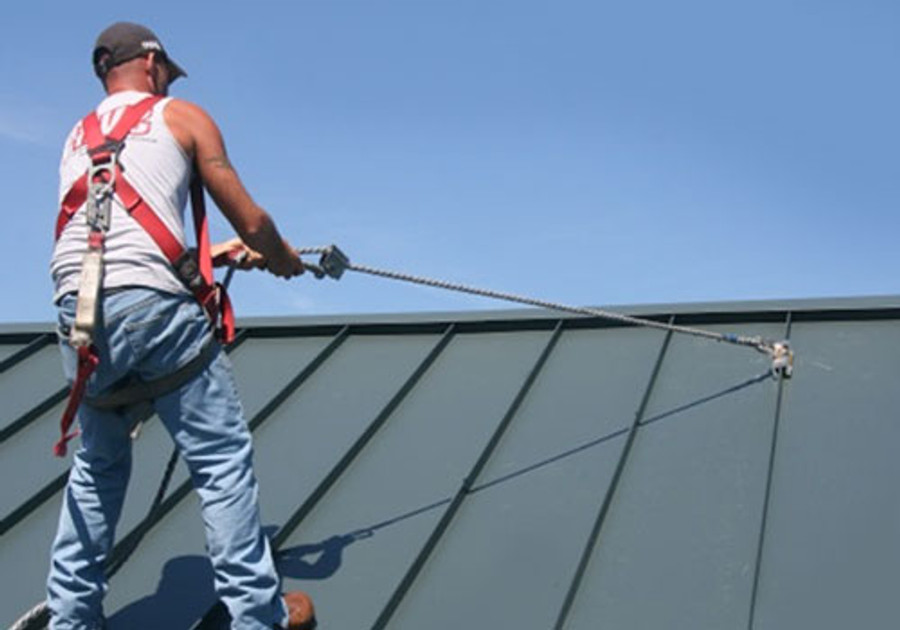What Is Fall Arrest?
Posted by Howie Scarboro - CEO Fall Protection Distributors, LLC on Jan 4th 2022
Owning a Personal Fall Protection plan(PFPs) has become a necessity, especially if you are consistently working at heights above 6 feet.
There are several ways to have a PFPs, an umbrella term for fall arrest and fall restraint.
Your first step would be to understand how and why it works.
In this article, we'd look at what a fall arrest is, how it works and include free hacks and guidelines to help you get the best out of your fall arrest system.
We'd also briefly discuss why fall arrests are essential and why you should always have them. Interested?
Fall Arrest! What are they? And why should you include them in your Personal Fall Protection Plans?
When you hear “Fall arrest,” I bet the first thing that pops in your mind is –can “falls” be arrested?
Well… yes!
Fall arrest is but one part of the personal fall protection plans. Many people believe it's the most crucial part of your PFPs, and even I couldn't agree more. Don't get me wrong; Fall restraints are also necessary if you are working at a reasonably safe distance from the ground.
Technically, the fall restraint stops a fall from happening. Fall restraints make use of some vital bodied vices anchored to a safe zone to keep you out of places that would increase the risks of falling. That sounds premium safe and great, but what happens when it fails? What then?
What's that one thing that stands between you and severe injury or possibly death when you fall?
It's Fall arrest!
Unlike the fall restraint, the fall arrest cannot stop a fall from happening, but it can stop it when it happens, minimizing the impact and possible casualties.
Like the fall restraint, the fall arrest system also uses body-holding devices connected to robust and reliable anchors. They would essentially restrain you like the fall restraint.
But in the case of fall arrest, they'd numb the risk associated with falling by limiting the total force acting on your body and would prevent you from falling into a building or colliding with standing structures.
There are only two types I can think of when it comes to fall arrest.
General Fall Arrest (nets)
The general fall arrest is a set system that can catch any single or multiple workers when they fall. This system reduces the fall hazard associated with working from cranes or well-elevated platforms. This system consists of a net installation placed below your current working level but above ground level.
Personal Fall Arrest (lifeline)
If you are looking for fall protection that better ensures your safety, then it would be your fall arrest system. The components of these fall arrest systems are lanyards, lifelines, full-body harnesses, and anchorages.
Any personal fall arrest system would significantly reduce the impact force whenever you fall and ultimately prevents you from hitting the base. As such, fall arrests are the most efficient, and they've been instrumental in saving lots of life.
As a company that works at height, the OSHA has made it compulsory to provide these PFPs systems for your workers. It's well stated in their issued 29th title of federal regulation code.
If you work alone and at height, then you don't need the OSHA to tell you why you need to protect yourself while working from heights.
Knowing that you need these systems is good and a critical first step. But, it's all for nothing if you do not understand what the fall arrest system components are and how they work.
Understanding the Fall Arrest System by Components
According to the OSHA guide, many parts go into what we can call a complete personal fall arrest system. While it might seem too much to be able to grasp all these components at one go, we can understand them by the role they play in helping you prevent what would've been a disastrous fall.
For simplicity, Let's call it the ABCD's of Fall arrest:
Anchorage
The anchorages are the baseline and most crucial of these systems. Without them, nothing would work regardless of how top-notch they seem. Anchorage is usually a structural adaptation. Every other component of the fall arrest is rigged and dependent on it. It's advisable to have the anchors sink deep and make sure they hold before you use the anchorage.
Bodywear Devices
Any of the devices worn by the worker makes this category. They are essentially full-body harness syles products..
Connector
The connectors are an intermediary component connecting the body vices/harness to anchorage. The lanyards are the perfect connector in any fall arrest.
Deceleration Device
The deceleration device is the device that dispels impact or forces that are associated with the free fall.
An excellent example of this would be the full-body harness. The full-body harness distributes the fall impact through the thigh and buttocks. This would help remove the risk of falling on one part of your body and alternatively remove the risk of casualties.
What's tricky about the fall arrest systems is that: for it to work, everything has to be in place and rightly placed too. All the components are interdependent on one another. When one thing fails, the whole system becomes inefficient.
TakeAways
Quite frankly, fall arrests are a lifesaver, and they should always be in place before you start climbing to the height you intend to work.
You've got to double-check that nothing is out of place. You have to fit anchors rightly. Your body harnesses must be in good shape. Check that rodents have not tampered with it.
When you purchase your fall arrest system, it's essential to check the OSHA guidelines to see if they match the standard. Or, save yourself from all the hard work and see our OSHA-approved fall arrest recommendation right now!

